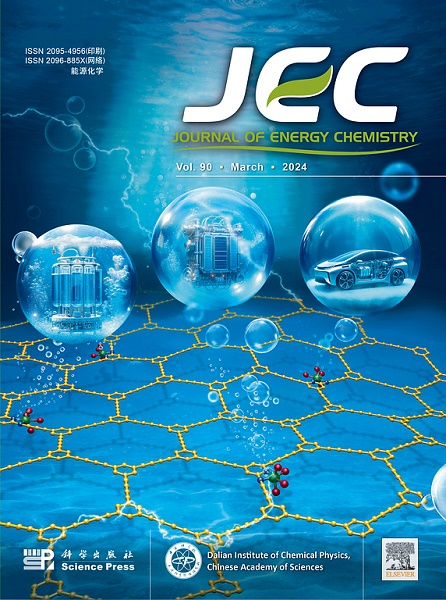Chiral electrolytes for rechargeable metal batteries
IF 13.1
1区 化学
Q1 Energy
引用次数: 0
Abstract
Charge transfer at the liquid (electrolyte)-solid (metal) interfaces is of fundamental importance to metal electrochemical deposition that further determines the reversibility and kinetics of energy-dense rechargeable metal batteries (RMBs). We demonstrate the fast charge transfer at the electrolyte-metal interfaces for lithium metal by designing and synthesizing electrolytes with chiral solvents: R (or S)-1,2-dimethoxypropane (R-DMP or S-DMP) and R (or S)-4-methyl-1,3-dioxolane (R-MDOL or S-MDOL). The chiral-induced spin selectivity is considered to produce spin-polarized metal surfaces, enabling the improvement in charge transfer rate and efficiency. The deposited Li metal in chiral electrolytes shows smooth and uniform morphologies, as well as high initial (>95%) and average (∼99.2%) Coulombic efficiency for Li metal stripping/plating process, thus prolonging the life-span of batteries using thin lithium anode (50 μm) to 400 cycles till 80% capacity retention. This work provides a distinct approach to regulate metal deposition beyond the limitation of ion de-solvation.

求助全文
约1分钟内获得全文
求助全文
来源期刊

Journal of Energy Chemistry
CHEMISTRY, APPLIED-CHEMISTRY, PHYSICAL
CiteScore
19.10
自引率
8.40%
发文量
3631
审稿时长
15 days
期刊介绍:
The Journal of Energy Chemistry, the official publication of Science Press and the Dalian Institute of Chemical Physics, Chinese Academy of Sciences, serves as a platform for reporting creative research and innovative applications in energy chemistry. It mainly reports on creative researches and innovative applications of chemical conversions of fossil energy, carbon dioxide, electrochemical energy and hydrogen energy, as well as the conversions of biomass and solar energy related with chemical issues to promote academic exchanges in the field of energy chemistry and to accelerate the exploration, research and development of energy science and technologies.
This journal focuses on original research papers covering various topics within energy chemistry worldwide, including:
Optimized utilization of fossil energy
Hydrogen energy
Conversion and storage of electrochemical energy
Capture, storage, and chemical conversion of carbon dioxide
Materials and nanotechnologies for energy conversion and storage
Chemistry in biomass conversion
Chemistry in the utilization of solar energy
 求助内容:
求助内容: 应助结果提醒方式:
应助结果提醒方式:


